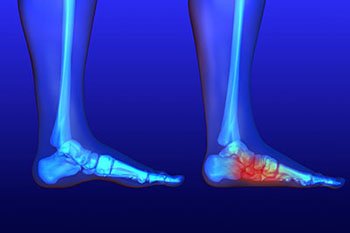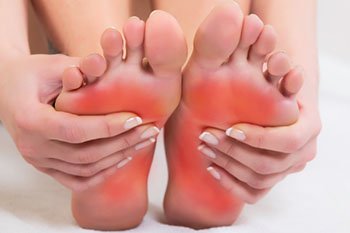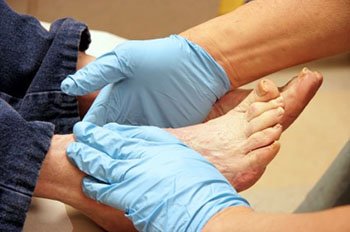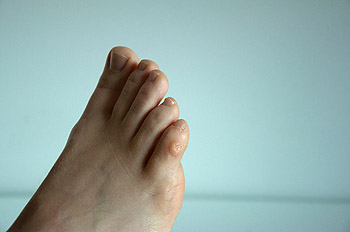Uncategorised
Flat Feet

Those who have a very low foot arch or no arch at all have a condition referred to as flat feet. Most children are born with flat feet and will gradually develop arches in their feet over time. However, if the arch does not develop, it’s likely for one to experience foot pain as they grow older. Those with flat feet tend to walk with an overpronation, often causing the feet to point outward. Since the feet carry the weight of the body, it can put an immense amount of pressure on those with little to no arch because that extra support is absent. The weight of the body is often unevenly distributed as well.
People with flat feet may feel foot pain due to a straining of their muscles and connecting ligaments. It’s also common for people with flat feet to roll their feet as they walk, which may in turn cause discomfort for the ankle. Swelling of the calf, lower legs, knees, and lower back may form as a result of flat feet, along with the feeling of stiffness in the feet as well. Some of the most common reasons for the development of flat feet include genetic factors, a foot or ankle injury, arthritis, and damage to the nervous system. Specific exercises and foot stretches may help alleviate the discomfort that flat feet can often cause.
If you would like more information about caring for flat feet, we suggest that you speak with a podiatrist who can offer you professional recommendations and an advised treatment plan.
Foot Pain

Foot pain can come in various forms and for a number of different reasons. When discomfort is experienced, it’s extremely important that you visit with a podiatrist who can properly diagnose the reason for the pain. Common causes of foot pain may include overuse injuries, such as from sporting activities like running. Other causes include complications due to arthritis, as well as diabetes. There are a number of foot conditions that can lead to foot pain as well.
Many patients have experienced severe foot discomfort due to bunions, plantar warts, hammertoes, stress fractures, blisters, ingrown toenails, and corns and calluses, to name a few. Foot pain is often associated with the following symptoms: swelling, redness, warmth, tenderness, discoloration, stiffness, as well as burning, tingling, and numbing sensations. It may help to check the feet daily for any abnormalities or deformities that may be causing the foot pain. Treatment for foot pain will vary on a case by case basis, along with the recovery process.
If you’re experiencing foot pain, we recommend you consult with a podiatrist for a proper diagnosis and advised treatment plan.
Diabetic Foot Care

Diabetes can unfortunately cause many foot problems that often lead to a great deal of pain and discomfort. For example, poor circulation of the feet is often an issue among those with diabetes because it damages the nerves. When this occurs, it’s likely for one to develop peripheral neuropathy. Peripheral neuropathy can make it feel like you have pins and needles in your feet. Others who have experienced this condition have also recalled a burning, tingling, or numbing sensation.
Since nerves are often damaged due to diabetes, the issue of not feeling when a wound has developed can lead to serious complications. Minor cuts or scrapes on the foot may run the risk of getting infected if the feet are not checked daily for wounds. Diabetes may also reduce blood flow to the feet, which in turn can make it harder for wounds to heal. With that being said, it’s important you seek professional help for treating any foot ailments. To prevent yourself from running the risk of developing a serious foot condition, it’s recommended that you wash and dry your feet daily, cut your toenails carefully, keep your feet moisturized, check them regularly for any abnormalities, and keep your feet warm and dry.
For more advice on how to care for diabetic feet, we suggest you consult with a podiatrist for professional care and a recommended treatment plan for any existing conditions.
Corns

If you happen to wear tight fitting shoes or tend to stand for the majority of your day, it’s likely that you may develop a foot condition known as a corn. When frequent friction or pressure is put on the foot, a small, hardened lump may form in that area. A corn may have a yellow hue and can typically be found on the side of the toes, as well as on the bottom of the feet. Though they are generally harmless, corns can often bring many patients discomfort.
To help prevent yourself from developing a corn, it’s important to wear shoes that give your toes enough room to comfortably move around. Some patients may also find it useful to soak the feet with warm water, pat them dry, and apply a moisturizer. After practicing these steps over a period of time, the corn will most likely soften. Your podiatrist may choose to file the corn down.
For more information and professional removal of your corn, we recommend you consult with a podiatrist for an advised treatment plan.



